
AI native CRM for the next generation of teams
Powerful, flexible, and intuitive to use, Attio is the CRM for the next-generation of teams.
Sync your email and calendar, and Attio instantly builds your CRM—enriching every company, contact, and interaction with actionable insights in seconds.
Join fast growing teams like Flatfile, Replicate, Modal, and more.
Happy Newsletter Friday!🏎️
Picture yourself in your early to mid 30s, cruising along the sunlit coastline just outside Nice, France. Your Porsche 356 hums beneath you as you head toward the famed cliffside destination, Le Plongeoir (a restaurant where you can physically eat over the Mediterranean sea), the salty Mediterranean air mingling with warm Provençal aromas. As you round each curve, the car’s vintage elegance affirms that your ambition carried you from boardrooms to breathtaking views, and that even greater horizons await.
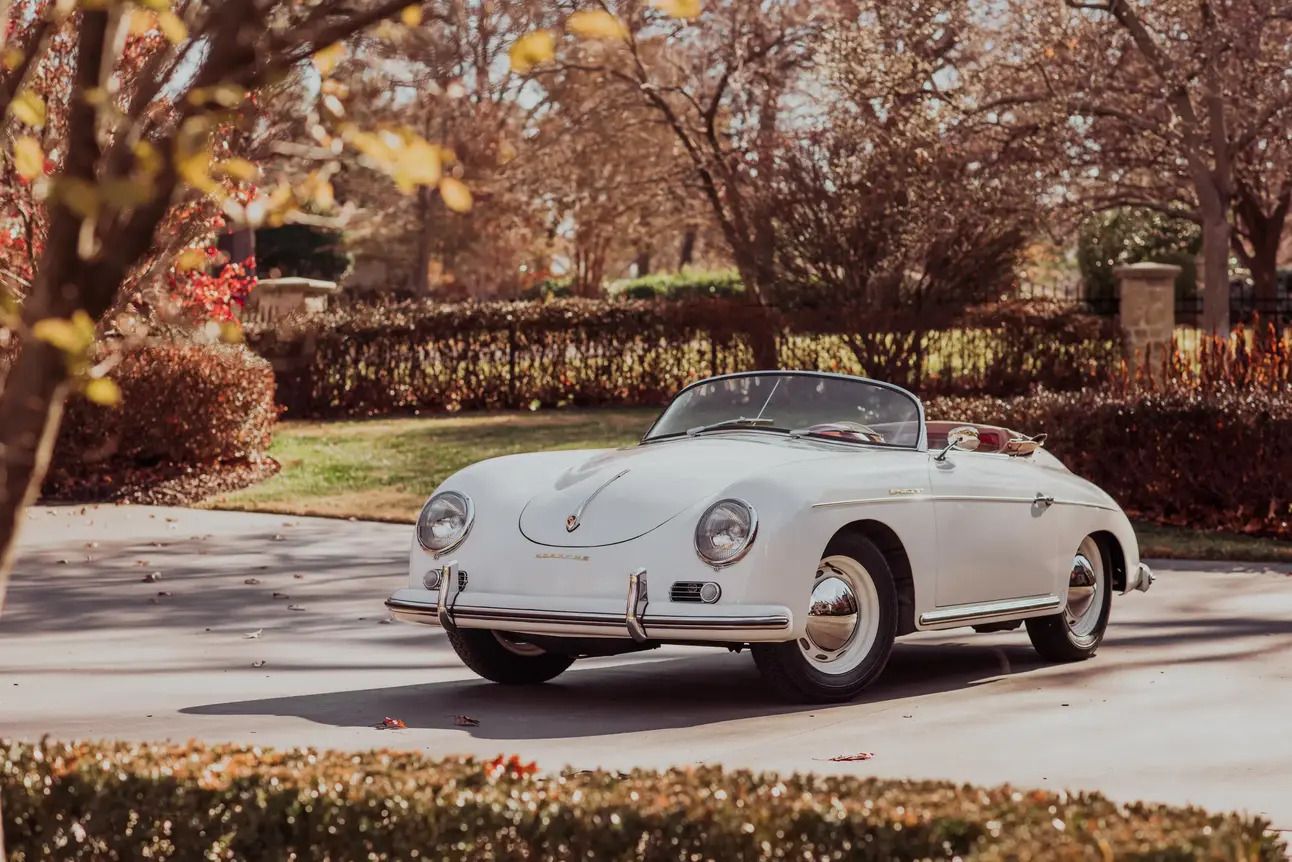
Porsche 356 Speedster
The Porsche 356’s story begins in 1948 when Ferry Porsche unveiled the prototype 356/1, setting the stage for Porsche’s inaugural production sports car. The “356” designation was simply an internal project code, but it soon became synonymous with sleek design, engineering excellence, and driving joy. Built first in Gmünd, Austria, before moving to Zuffenhausen, Germany, the 356 quietly ushered in a new era of automotive greatness. Under the hood, the 356 evolved impressively. Early models like the 356/1 sported a mid-mounted 1.1 L flat-four delivering just 40 hp, accelerating 0–60 mph in around 23 seconds and topping out at 84 mph. By 1963, the 356 C coupe boasted 75 hp, a curb weight of about 2,059 lb, a 0–60 time of 13.5 seconds, and a top speed near 107 mph. Each iteration refined performance, handling sharper curves and sharper ambitions.
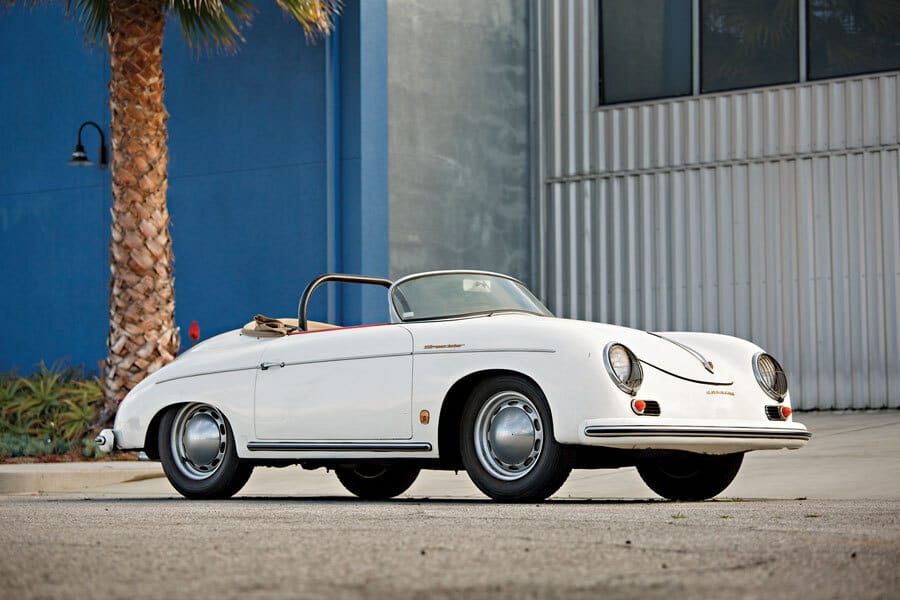
Porsche 356 Speedster
Pricing back in the late 1940s reflected the brand’s modest beginnings: around $3,000–3,750 USD for early coupes . Fast-forward to today, and restored 356s command $70,000–300,000, with ultra-rare Speedsters, Carreras, and prototypes fetching well over $1 million at auction . The leap in value mirrors the car’s journey from humble debutante to automotive icon.

The Porsche 356 Speedster interior
The variants that defined the 356’s legacy evolved methodically: the 356 A (1955–59) introduced the lightweight Speedster and bump in horsepower to ~60 hp; the 356 B (1959–63) offered Super 90 and 2000 GS models with 75–90 hp and 0–60 times near 9 seconds; and the 356 C (1963–65) added disc brakes and SC-level output, capping production with some 16,668 units at 75 PS.
Main differences between the 3 models:
Feature | 356 A (1955–1959) | 356 B (1959–1963) | 356 C (1963–1965) |
|---|---|---|---|
Brakes | Drum brakes | Improved drum brakes | Upgraded to 4-wheel disc brakes |
Body Design | Low bumpers, classic curved look | Higher bumpers, more upright headlights | Similar to B with minor refinements |
Engine Performance | 60–75 hp (1.3L & 1.6L engines) | Up to 90 hp (Super 90 variant) | Up to 95 hp (SC model) |
Handling/Suspension | Basic torsion bar, swing axle setup | Revised suspension for better handling | Further suspension refinement |
Interior/Trim | Minimalist, basic dash | More upscale, improved seats & wheel | Most refined materials and trim |
Quick takeaway:
356 A = Lightweight, classic, purest form
356 B = Stronger performance, modernized look
356 C = Most powerful and best handling, with disc brakes
Chart: Production vs. Price (1949–1964) (Not part of the 500‑word article)
Year | Production | MSRP (USD) | Today’s Value (USD) |
|---|---|---|---|
1949 | ~50 | 3,000 | 3M+ (prototype) |
1955 | ~2,500 | 4,000 | 150k (Speedster) |
1960 | ~9,700 | 4,200 | 80k (Super coupe) |
1964 | ~14,150 | 4,500 | 100k+ (356 C) |
Total | 76,303 | — | — |
honorable mention:
The ‘SL’ in Porsche 356 SL stands for Super Leicht (‘super light’), reflecting its ultra-lightweight aluminum body and aerodynamic enhancements designed specifically for racing. In 1951, Porsche entered the SL at Le Mans, driven by Auguste Veuillet and Edmond Mouche and it claimed a class victory in the 1,100 cc category, marking Porsche’s first major international motorsport success. In total, around 76,303 356s rolled off the line between 1948 and 1965, with roughly half still alive today. Beyond specs, the 356 earned a place in cultural lore: claimed victories in racing events like Le Mans and Carrera Panamericana, immortalization as California’s “America Speedster,.”
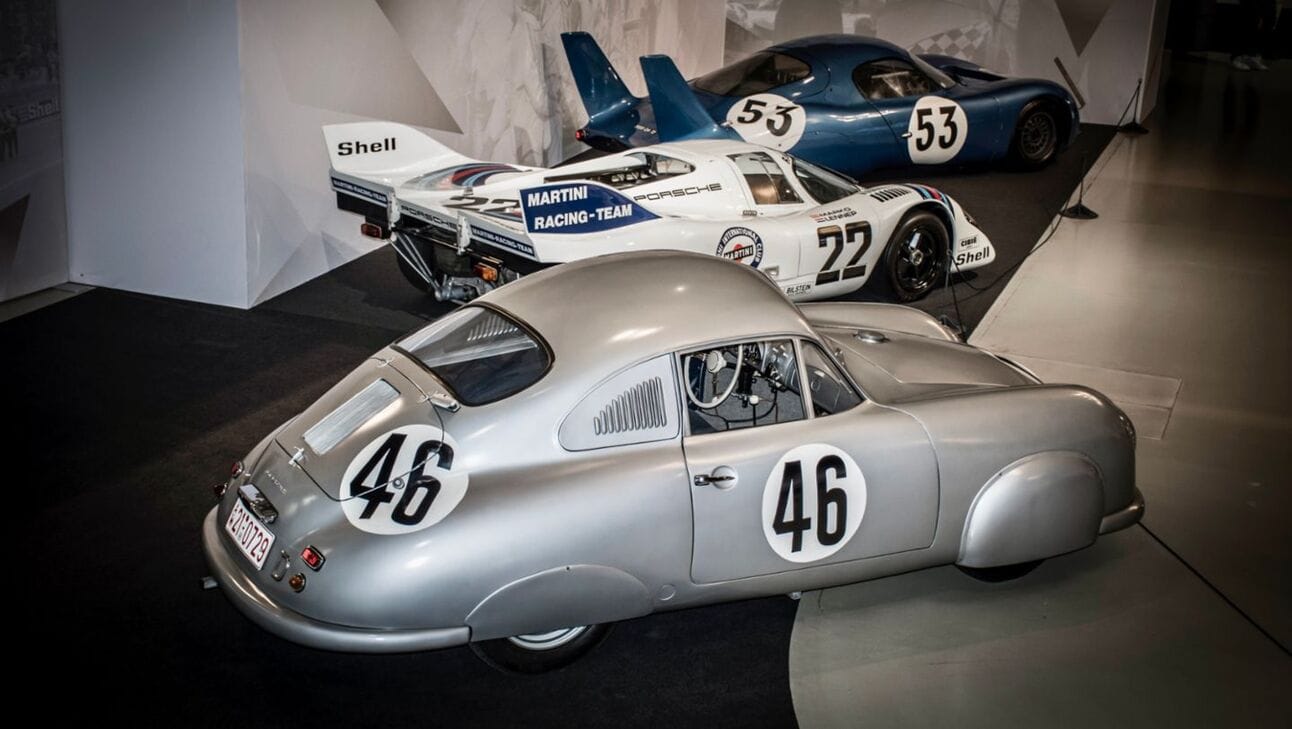
Porsche 356 SL
What’s new in the world of Porsche classics/Future cars
CLassic Cars
2025 Porsche Classic Restoration Challenge is live, with more than 100 vintage Porsches restored since 2020. The competition celebrates craftsmanship and originality across North America.
Expanded eligibility now includes newer classics like the 997-gen 911 and 987 Boxster/Cayman, in addition to the 356, 914, and earlier air-cooled icons.
New Classic headquarters in Atlanta features a restoration atelier, exclusive parts facility, and event space—cementing Porsche’s investment in preserving legacy.
future cars
Panamera EV arriving by 2026: Porsche is preparing a fully electric Panamera with a ~400-mile range, built on its next-gen SSP Sport platform — designed to compete with high-luxury EV sedans.
Mission X hypercar is in development: A dramatic, all-electric concept aimed at becoming the fastest street-legal car on the Nürburgring. It could be Porsche’s boldest statement since the 918 Spyder.
Vision 357 and Vision 357 Speedster concepts hint at possible heritage-inspired electric models, paying tribute to the 356 with futuristic powertrains and minimalist design.
Fully electric Cayenne is on the roadmap for late 2026 or 2027, joining Porsche’s SUV lineup with a more family-focused luxury EV option, built on the PPE platform.
SSP (Scalable Systems Platform) will underpin all future EVs across the VW Group — Porsche's version will emphasize performance, ultra-fast charging, and dynamic handling.
Next-gen charging infrastructure: Porsche is building its own ultra-fast charging network, with premium design, climate-controlled lounges, and 350kW capabilities to support future Taycan, Macan EV, and more.
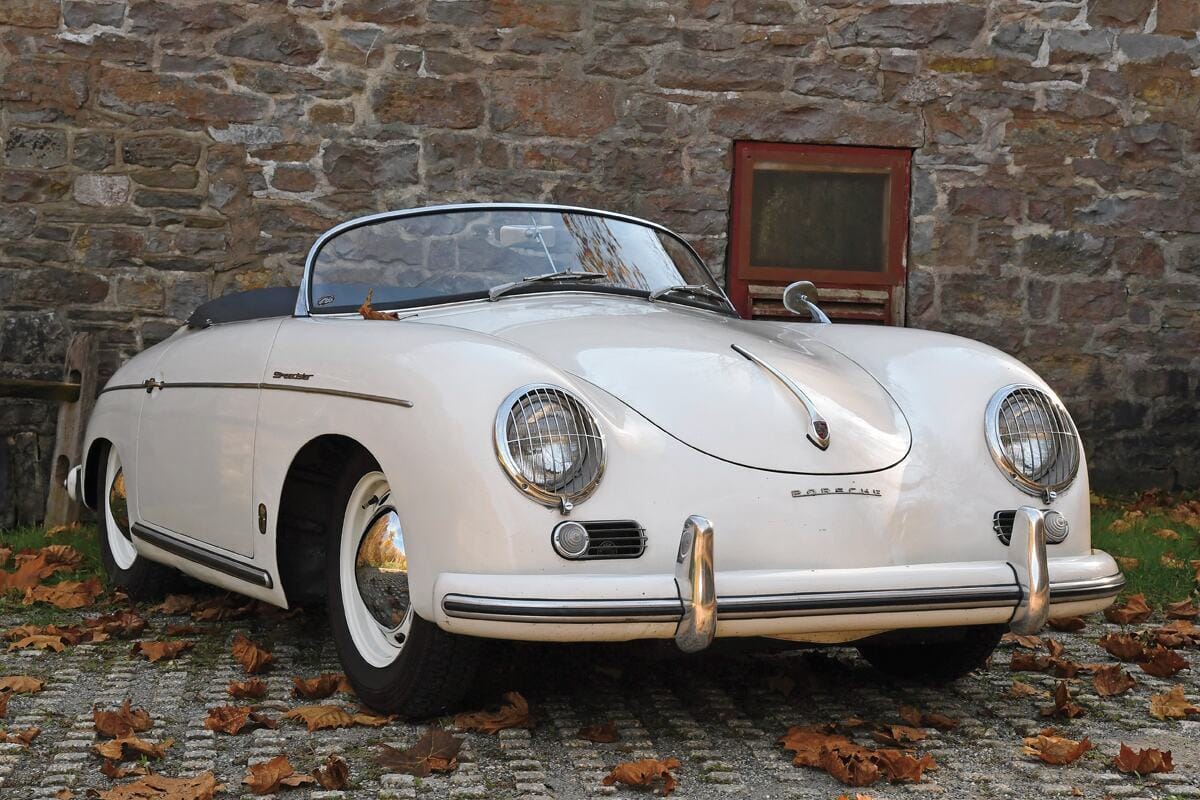
Porsche 356 Speedster
As the sun sets over the Riviera and the road stretches endlessly before you, remember that this Heirloom-worthy ride is proof that wealth begins not with money, but with character, perseverance, and a willingness to embrace the curve. This car wasn’t born in a palace, it was forged in a post-war garage, hand-shaped by visionaries who believed in the impossible. The world doesn’t reward hesitation. It rewards those who see beauty in the challenge and art in the climb. The best things in life are built, not bought. And the road to real wealth, starts with choosing the hard path… and driving it with style. Be someone who refines every detail and who believes enough in their dream to make it real. Don’t wait for the perfect moment to begin. The world is moved by those who start before they’re ready. Drive forward with courage. Build something that lasts. This isn’t just nostalgia. This is your future, if you dare to create it. I believe in you!
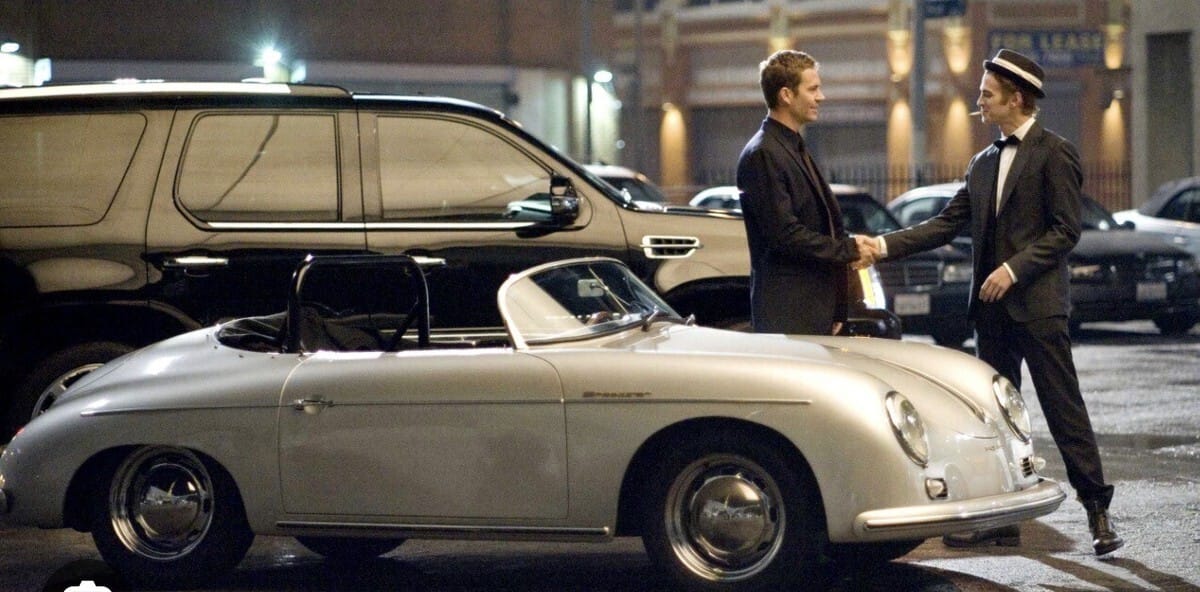
Porsche 356 Speedster with Paul Walker in the movie takers
